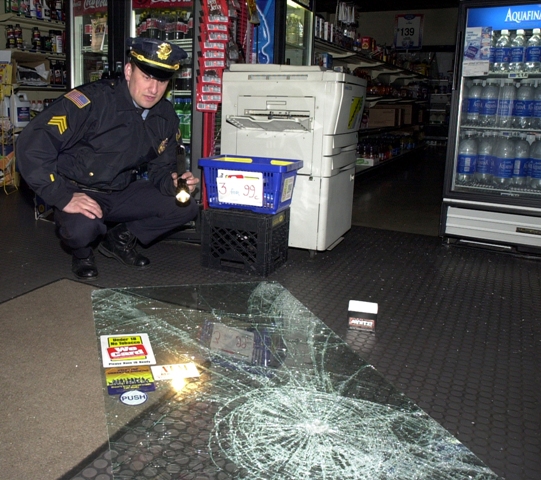Home Safety Tips
As a police veteran for a Metro-Boston area police department I’ve seen my share of home burglaries in the last 22 years. Experience has shown me that there is a lot to be learned from burglary statistics, especially when you are setting up your home’s security plan.
In my experience many burglaries take pace without any sign of forced entry, because a door or window was left unlocked.
The rest of the burglaries involve forced entry, meaning that the burglar is using body force or a tool to gain entry. Most homes are entered through a front or side door. Many of these burglaries occur during the day while people are at work and the perpetrator usually spends no more that 10 minutes inside the home.
Items most taken are things that are easily and quickly carried away. Items such as cash, jewelry, electronics, computers and guns.
Being a cop and a carpenter I have not only responded to but have repaired many homes damaged from burglaries.
Here are a few tips to reduce the risk of becoming a burglary statistic:
1. Lock your doors and first floor windows when you leave your house.
This is probably the easiest and most cost-efficient way to prevent burglary.
2. Lock your doors even when home.
Many burglaries when people are home. These are the worst and sometime result in the homeowner being assaulted or injured.
3. Don’t keep valuables that are easily carried off, out in the open.
Install and use a safe to store cash, firearms and expensive jewelry.
4. Install good quality deadbolts on your doors.
A good quality lock is a deterrent. When burglar suspects are interviewed about the selection of a target, many have said that they look for an easy entry into the home. The presence of a quality deadbolt often caused them to move on to another house.
Not all deadbolts are created equal. Choose a high Grade 1, American National Standards Institute [ANSI] grade security lock that protects against picking and drilling. Expect to pay more for this quality lock.
A door entering into attached garage of a house offers the opportunity to hide from view while breaking in. Make sure these types of doors have deadbolts.
Also make sure to install the deadbolt strike plate properly. An improperly installed strike plate is usually the weakest point in the entire door lock system. A secure deadbolt strike plate needs 3″ long screws that secure the strike to the wall framing, not just to the door frame jamb.
5. Use security bars at sliding glass doors.
Many companies make after market locks that are installed behind the sliding door to prevent it from being lifted off its track thus defeating the lock. A wooden dowel or cut broom stick works well too.
6. Consider installing a venting sash lock on easy accessible first and second floor double hung windows.
These locks have a sliding “stud” that stops the window from opening at a desired height. I recommend installing them to allow the window to open 3” for ventilation. The nice part of these locks is that they are easily opened from the inside in the event of a fire or other emergency.
7. Consider using key control
Key control is simply controlling who has copies of keys to your home.
Anyone with criminal intent but entrusted with your keys can make a copy of your house key at a hardware store. [e.g., house cleaner, re-modeler, car mechanic]
Some lock manufacturers offer deadbolt locks that use keys that cannot be copied except by a locksmiths or the manufacturer.
Newer lock technology now offers a re-keying option that allows the homeowner the ability to re-key their locks. Kwikset offers what they call SmartKey.
SmartKey locks allow you the ability to quickly re-key your locks anytime you desire. This could be done after you lose or mis-place a key, after a remodeling project, after someone moves out, etc.
Stay Safe ~ Concord Carpenter


